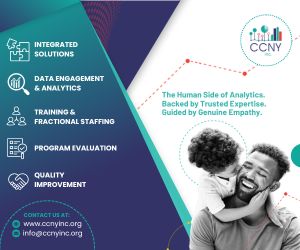Health Care System
The United States health care system encompasses a mixture of private and public entities that are either non-profit or for-profit. Health care coverage may be financed through federal and state government programs or can be purchased through the health insurance marketplace. In contrast, a smaller proportion of the U.S. population is uninsured. The resulting effects of a decentralized system has led to considerable challenges for provider organizations—including cost pressures, a push towards alternative payment models, and market consolidation. Despite these challenges, there are opportunities for provider organizations in reducing excess costs and utilization, particularly as payers look for innovative approaches that can demonstrate a return-on-investment in terms of cost and consumer outcomes.
Editor’s Picks
-
 Since 2022, The Average Wait Time For Physician Appointments In Five Specialties Increased By 19%, To 31 Days
Since 2022, The Average Wait Time For Physician Appointments In Five Specialties Increased By 19%, To 31 Days
-
 Health Care & Social Assistance To See Largest Job Growth From 2024 To 2034
Health Care & Social Assistance To See Largest Job Growth From 2024 To 2034
-
 National Health Care Fraud Arrests Result In Charges Against 324 Individuals For $14.6 Billion In Alleged Fraud
National Health Care Fraud Arrests Result In Charges Against 324 Individuals For $14.6 Billion In Alleged Fraud
-
 96% Of Health Care Executives Are ‘Ready’ To Use Digital Health Solutions
96% Of Health Care Executives Are ‘Ready’ To Use Digital Health Solutions
Latest Resources
- Informational Bulletin Regarding Section 71119 Of The “Working Families Tax Cut” Legislation, Public Law 11921: Requirements For States To Establish Medicaid Community Engagement Requirements For Certain Individuals
- The Technology-Enabled Meaningful Patient Outcomes For Digital Health Devices Pilot Notice
- Survey: 25% Of ACA Marketplace Enrollees Would Go Without Insurance If Premium Payments Doubled
- Florida Hospitals’ Opioid Case Against Retail Pharmacy Chains Results In Mistrial
- Nest Health Raises $22.5 Million To Expand Medicaid Whole Family Home Medical Care Model
- Oracle’s AI-Powered Ambulatory EHR Granted Federal ONC Certification
- Optum Rx To Reduce Reauthorization Requirements For 40 More Drugs
- Connecticut Office Of Health Strategy Approves Hartford HealthCare Subsidiary’s Acquisition Of Manchester Memorial Hospital
- Federal HHS Releases AI Strategy
- Executive Order Launches The ‘Genesis Mission’ To Spur Scientific Research Through Artificial Intelligence
- Medicare Advantage Beneficiaries With Mental Health Diagnoses Made More Mental Health Visits After Switching To Traditional Medicare
- Accreditation Commission For Health Care Expands Assisted Living Accreditation Program Nationwide
- U.S. Department Of Health & Human Services Artificial Intelligence Strategy
- Idaho Department Of Health & Welfare To Transition To Comprehensive Medicaid Managed Care
- Northwell Health & K Health Launch AI-Powered Virtual Primary Care Platform

- Brook.ai Secures $28 Million In Series B Funding To Accelerate Next Phase Of Growth & Innovation In Remote Care
- Reema Health Raises $19 Million To Expand Its Medicaid Member Engagement Services
- Sage Care Procures $20 Million In Funding For An AI-Powered Care Navigation System
- Allegheny Health Network & Heritage Valley Health System Sign Affiliation Agreement
- Cross Country Healthcare Terminates Merger Agreement With Aya Healthcare
To sign-up for monthly Health Care System alerts, you must be signed in to your account.
Government Contract Award Announcements
- Wisconsin Awards Virtual Reality Software For Law Enforcement Contract To Operator XR, LLC
- California’s Crescent City Awards Permanent Local Housing Allocation (PLHA) & Prohousing Incentive Program (PIP) Services Contract To Community System Solutions
- Nevada Awards Government Accounting Services & Medicaid Auditing Contract To Myers & Stauffer, LC
- Nebraska Awards Administrative Support Services For The Employee Health Care Medical Benefit Plans Contract To Blue Cross & Blue Shield Of Nebraska, Inc.
- Nebraska Awards Administrative Support Services For The Employee Health Care Prescription Drug Benefit Plans Contract To Blue Cross & Blue Shield Of Nebraska, Inc.

